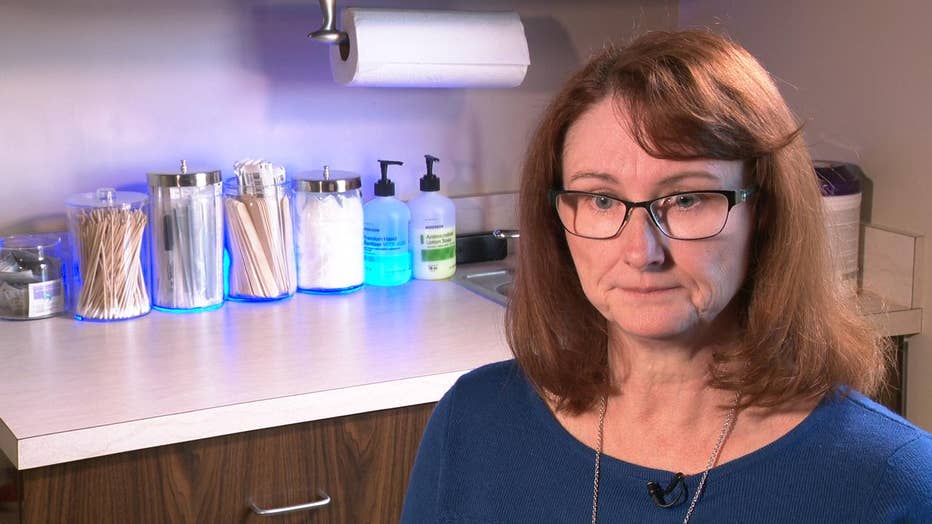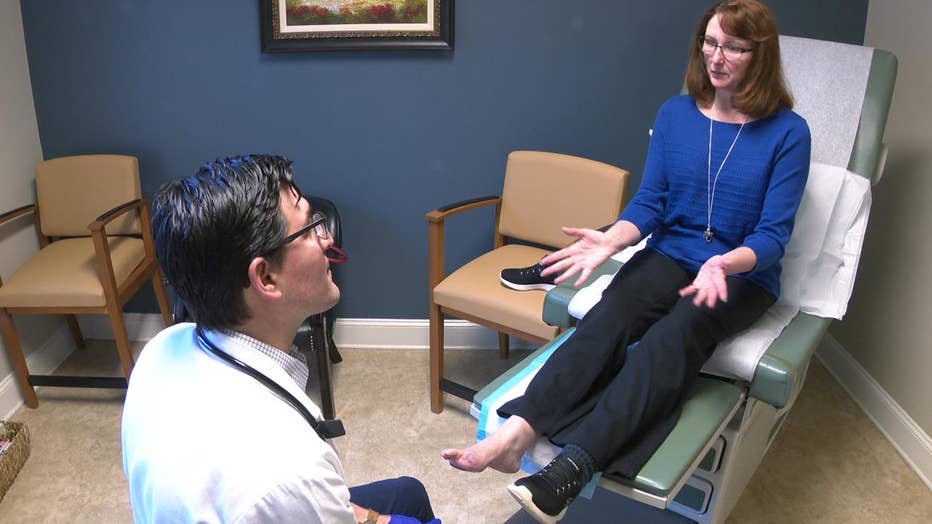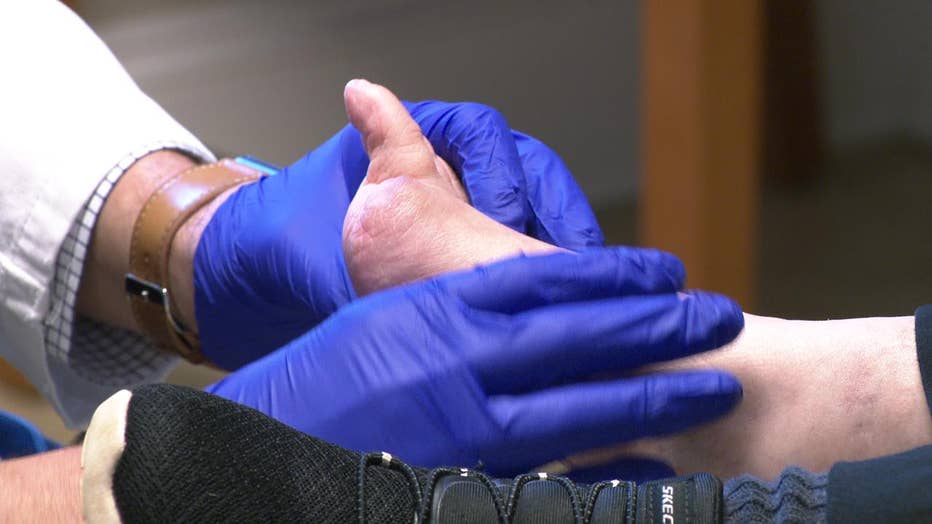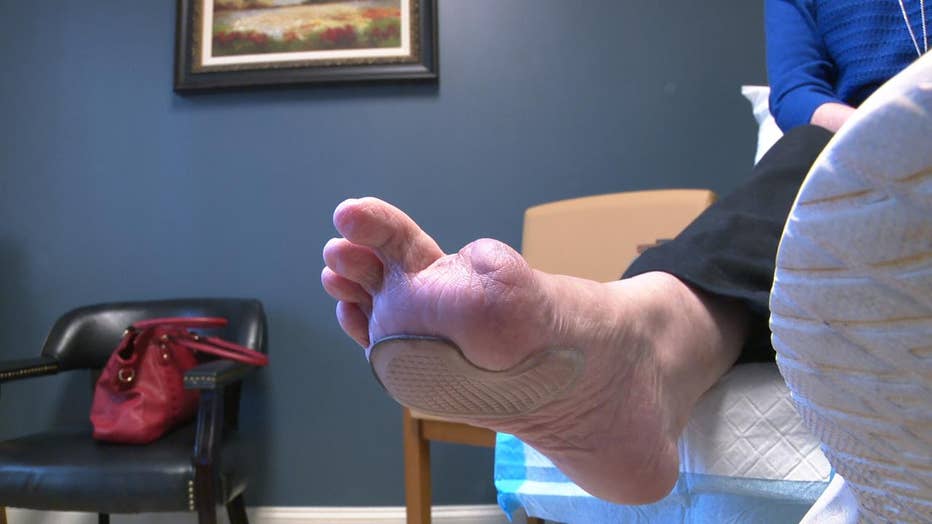Georgia woman believes nail salon infection forced her big toe amputation
FLOWERY BRANCH, Ga - It was a midwinter treat to get her toes ready for spring.
"It was, like, 'Let's go get a pedicure,'" Anita House remembers.
The 56-year-old woman from Flowery Branch, Georgia, met her sister at a nail salon halfway between their homes.

Anita House developed a bone infection after a pedicure. When it didn't respond to oral or IV antibiotics, she had her big toe on her right foot amputated.
"We'd been there before, with never any issues, House says. “They put the liner in the bowl. They've got the pack with the instruments in it, and then they take them out."
Afterward, she says, she expected some redness for a day or two around her right big toe.
“Because I have an ingrown toenail, and they would cut it out," House says. "This time, it was 2 or 3 days, and it wasn't going away. So, I did over-the-counter triple antibiotic cream, thinking, it's not a problem."
The cream didn't seem to help.

Anita House developed a bone infection after a pedicure. When it didn't respond to oral or IV antibiotics, she had her big toe on her right foot amputated.
So, she went to her primary care doctor, who thought House might have a nail fungus, and referred her to a podiatrist.
She says she ended up seeing 3 different foot specialists, and trying a half dozen different oral antibiotics.
"Every time they gave me a new antibiotic, I was, like, 'Oh! This is it! This is going to fix it!'" House says.
Months past, and nothing seemed to be working.
The toe was becoming increasingly swollen.

Anita House developed a bone infection after a pedicure. When it didn't respond to oral or IV antibiotics, she had her big toe on her right foot amputated.
So, House's third podiatrist sent her to see infectious disease physician Dr. Manuel Rodriguez, with Infectious Disease Services of Georgia.
"Unfortunately, as we later found out, Miss House progressed, despite our treatment with oral antibiotics," Dr. Rodriguez says.
Dr. Rodriguez ordered an MRI to look at her toe.
"The infection had gotten into the bone," House says. "And, that's when it got serious."
Dr. Rodriguez says they were never able to culture the bacteria inside House's toe bone or determine exactly where
she contracted the infection.
He typically only sees these kinds infections in people with other health problems, or comorbidities, like diabetes
or obesity.

Anita House developed a bone infection after a pedicure. When it didn't respond to oral or IV antibiotics, she had her big toe on her right foot amputated.
"In Ms. House's case, she didn't have any of the typical comorbidities to say, 'Wow, this woman is going to have a problem in the near future,'" Dr. Rodriguez says. "So, it was quite unusual in her case for it to advance the way it did."
If the infection spread beyond her toe, House was told, it could become much more serious.
"The logical choice was amputation," she says.
October 15, 2019, surgeons removed House's right big toe.

Anita House developed a bone infection after a pedicure. When it didn't respond to oral or IV antibiotics, she had her big toe on her right foot amputated.
"It still freaks me out a little bit and go, 'Whoa, there is no toe,'" she says. "The shocking thing from two of the podiatrists, they told me, 'Oh, yeah. Infections from pedicures, are a lot more common than people know. But nobody had ever told me!"
Anita House wants to warn women to choose their nail salons carefully -- and ask questions.
"Verify the instruments have been sanitized," she says. "Go in eyes-wide-open, and verify. Don't assume."
To lower your risk of infection, bring your own tools, or ask your nail technician how they sanitize the salon's tools.
Ask you technician not to cut or push back your cuticles.
If you have a cut or abrasion, put off getting a manicure until you have had time to heal.

